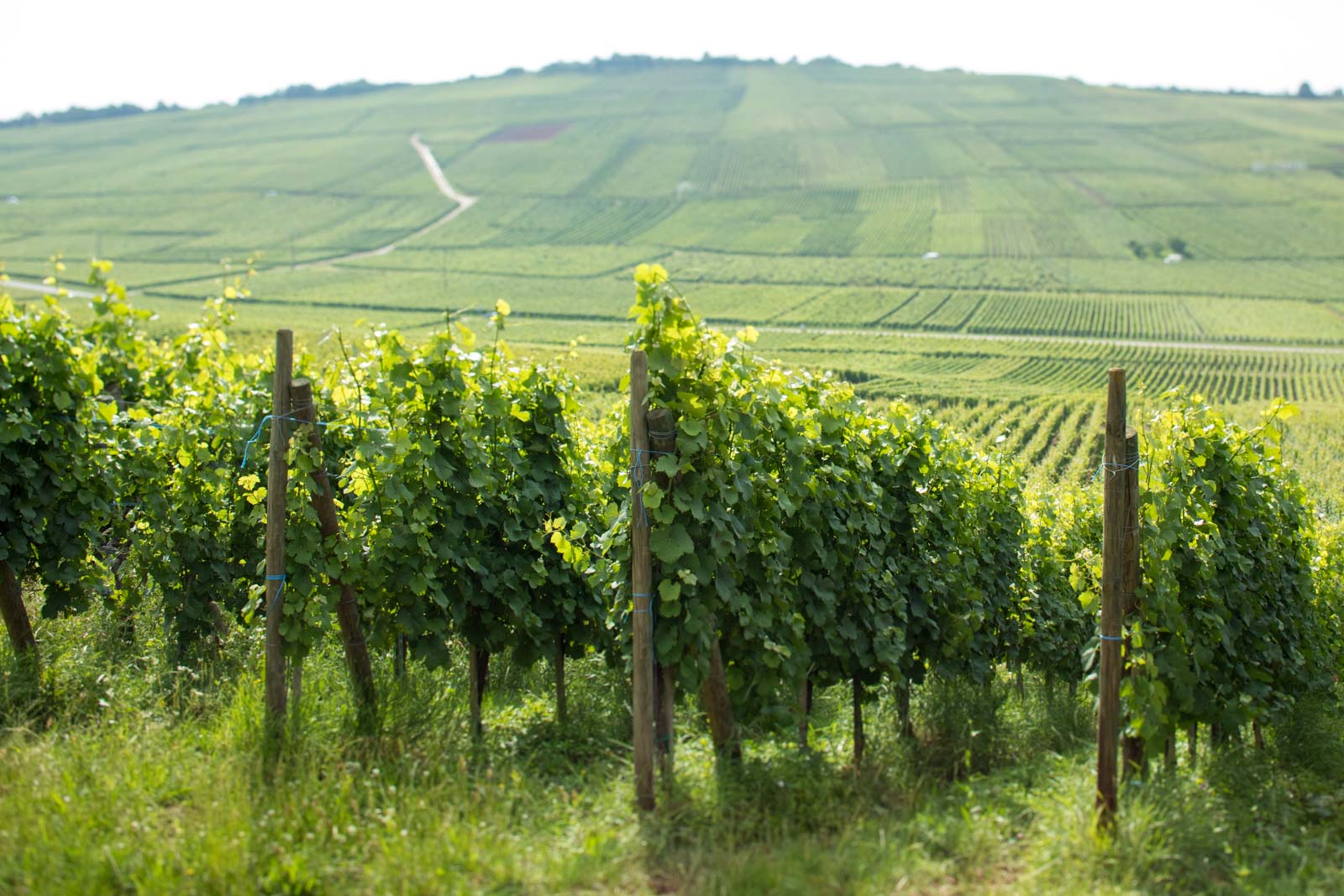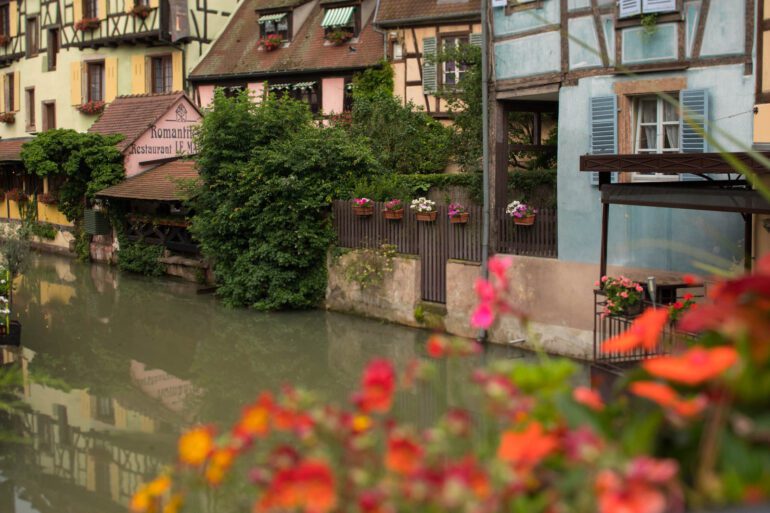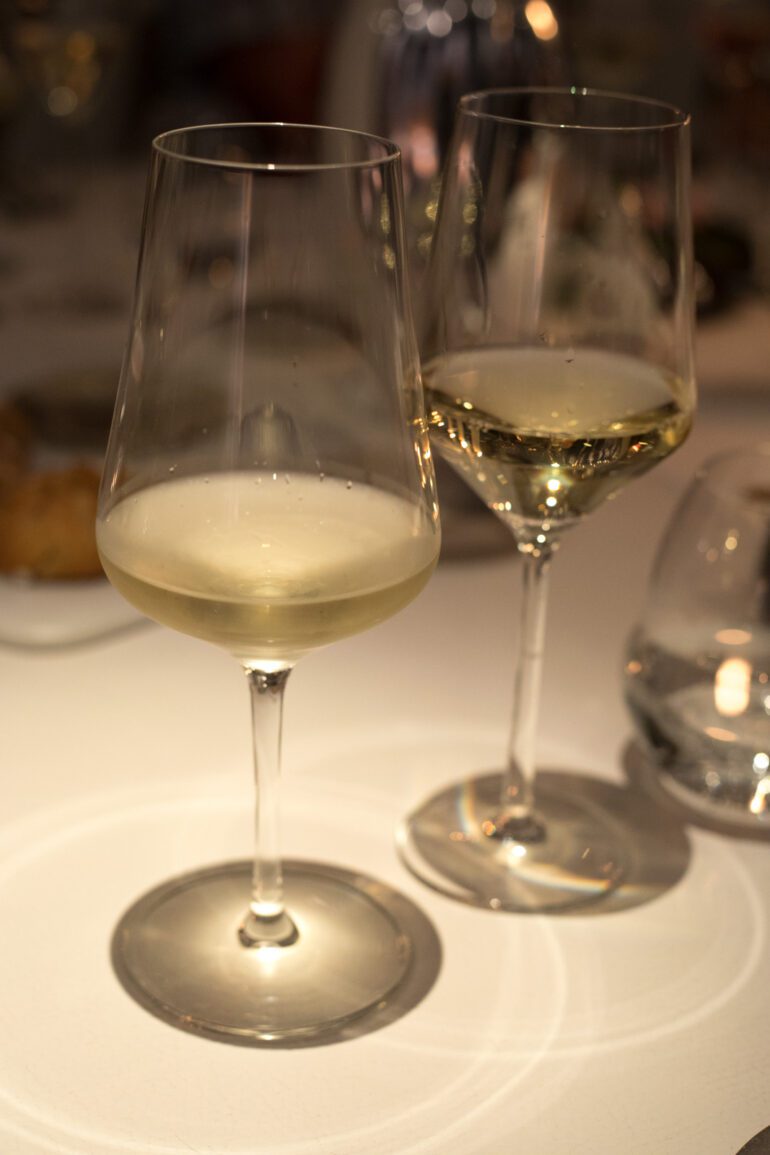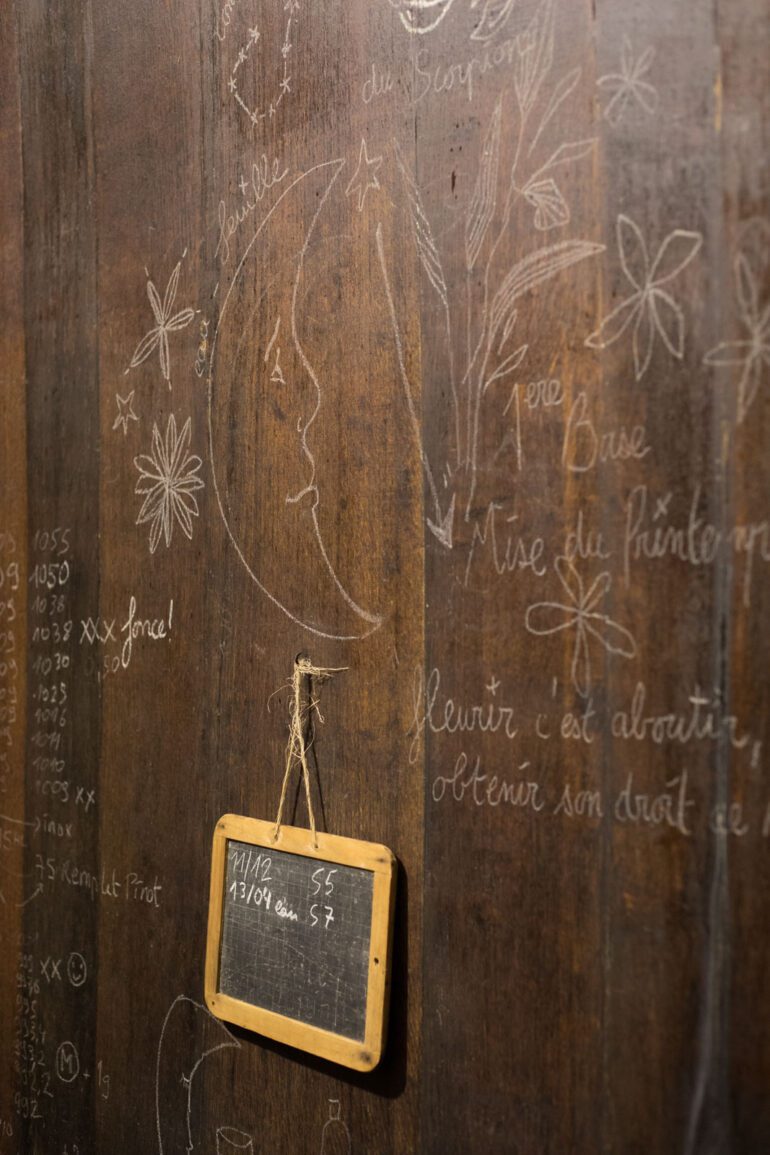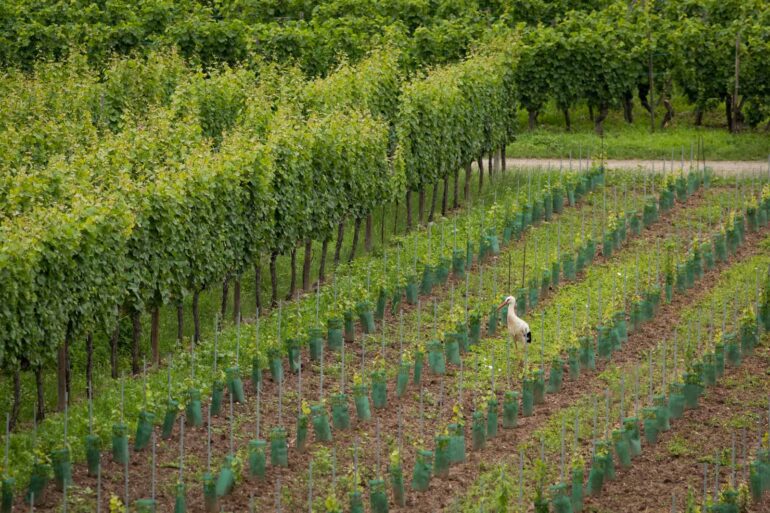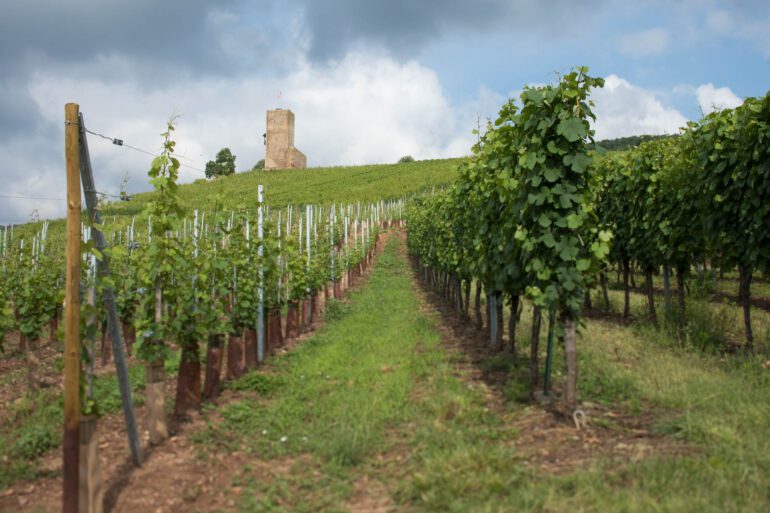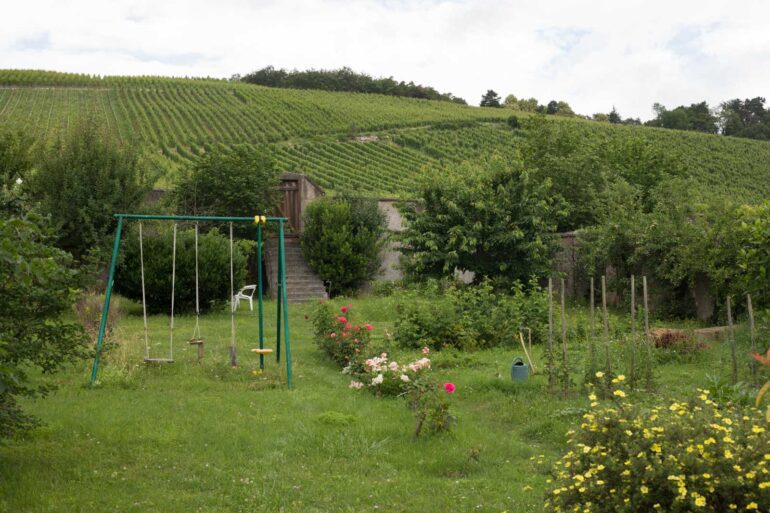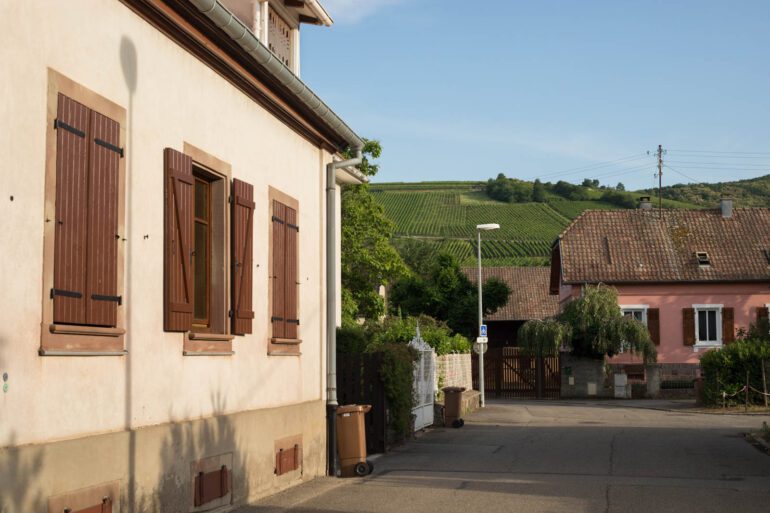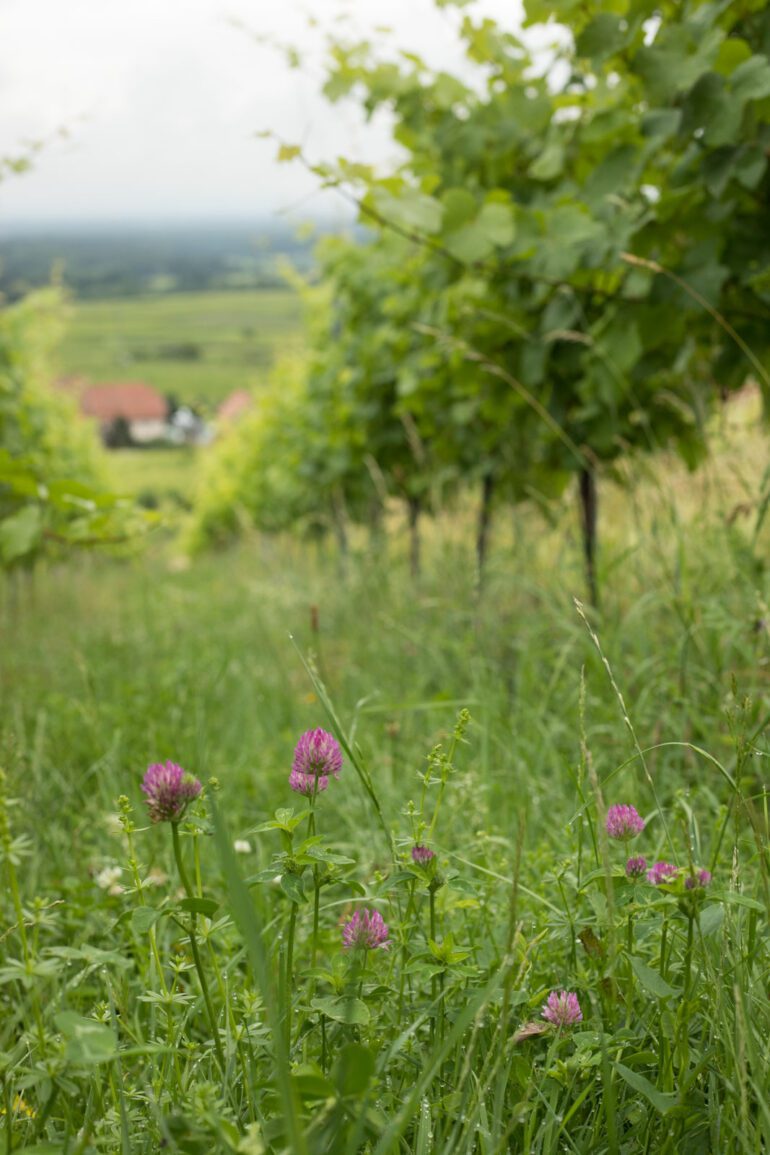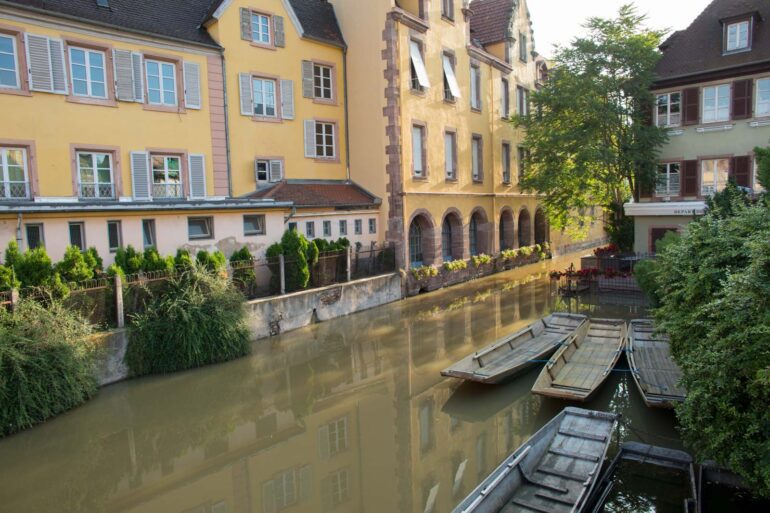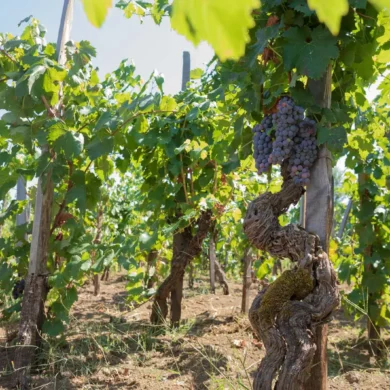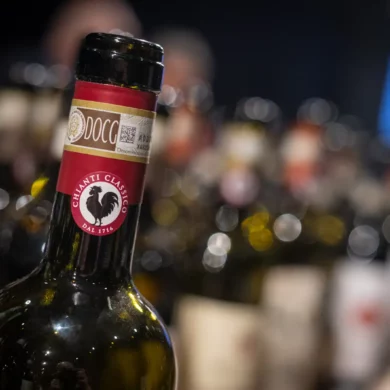Wedged between the Vosges Mountains and the Rhine River, Alsace is a world all its own. Fabulously green and with the garishly colored city of Colmar at its heart, Alsace is best known for Riesling. That is because under persistently sunny skies (and above a geological cornucopia), Riesling takes on its most towering, statuesque form here, particularly those hailing from Alsace’s 51 Grand Cru vineyards.
Alsace is still very much about Riesling. And you know what? That is fine. Because at its best, I think Alsace’s Riesling is among the finest white wines in the world.
But when I last visited (in 2018), the talk among winemakers was about what else Alsace could do.
Is Pinot Noir the Future?
In an ever-changing world, a diversity of offerings is a huge strength, and because of climate change, Pinot Noir has emerged as a very real possibility for Alsace. As the lone red grape in Alsace, it has traditionally been planted for serviceable, if extremely light, red wines for the local market, and in the blend of Crémant d’Alsace. But reaching higher with a fine-wine Pinot Noir is relatively novel in the area.
At a few select domaines, I tasted versions that could rival some parts of Burgundy. As a freelance writer looking for trends to write about and to pitch to editors, this seemed big.
The problem is, wine doesn’t work that fast, even in the age of rapidly shifting weather patterns. Vines need time to mature, winemakers need time to experiment with each vintage, and markets need years to develop. My hope of finding a high-quality alternative to Burgundy (theoretically at a cheaper price) has not fully panned out. At least not yet. And while Albert Mann, Barmès-Buecher and Meyer-Fonné are capable of dazzling Pinot, the region-wide Pinot Noir movement is still finding its footing.
During the region’s last two biennial events (in 2021 and 2023, both held digitally because of the pandemic), I was mailed tasting kits and afforded several tastes of the emerging Pinot Noir movement. Many lacked the backbone and complexity necessary for at least our American market tastes. “Technically competent but not thrilling,” I wrote about one wine, which could have described a few others. But I’m happy to wait and see where this goes.
Riesling Remains King
In the meantime, Alsace is still very much about Riesling. And you know what? That is fine. Because at its best, I think Alsace’s Riesling is among the finest white wines in the world.
Riesling always suggests ripe apples, but there is often a twist of lime-like acidity that creates momentum on the palate. From there, its more complex forms bring about exciting nuance and chameleon characteristics which can often be attributed to the vineyard’s terroir. And the versatility at the table is extremely high. Riesling tends to be shoehorned with pairings (e.g. spicy, flavorful dishes that fight tannic red wines), but I love pouring it alongside heartier proteins and even delicate seafood dishes that are usually “owned” by Sauvignon Blanc and Chardonnay.
Our Next Live Online Wine Class
Join us on Sunday, May 21 for a live class on the wines of Alsace. Guests are invited to taste, compare and discuss Pinot Gris and a Riesling, or just open a Crémant. If you have any plans to travel to Alsace, this presentation is a must-see.
6 Top Grand Cru Riesling from Alsace
What follows below are the six most exciting Riesling wines from the tasting kits sent to me for this year’s Millesimes d’Alsace event. It should be noted that the format of these samples was not 750mL bottles, but individual tasting viles. Seven sets of four were sent, with six of those sets focusing on six domaines.
Top Pick: 2020 Domaine Emile Beyer Alsace Grand Cru Eichberg Riesling
Of the six different domaines whose samples were sent, Domaine Emile Beyer’s wines were the most consistent and riveting, none more so than the Riesling from the Grand Cru Eichberg, which has the driest microclimate of any vineyard in the Colmar area. This seems to lead to concentrated and intense Riesling wines predicated on power, which Emile Beyer conveys brilliantly with this wine (★★★★★). The aromas are intense and seem to carry lees, marzipan and vivid herbs along with a rich golden apple-like core of fruit. Sleek and pretty, yet rich and massive. A roasted-nut quality endures on the finish.
2020 Domaine Emile Beyer Alsace Grand Cru Pfersigberg Riesling
Another stellar Grand Cru Riesling from Emile Beyer (they have four in all) comes from further south in the Grand Cru Pfersigberg outside the village of Eguisheim (pictured at the top). I toured this vineyard in 2018, and while the Vosges mountains are ever-present, the take-away was a sense of space. It feels very open to the south, and indeed Pfersigberg is known for early ripening. Emile Beyer’s take (★★★★ 3/4) is rich and intense aromatically. There are notions of golden apple, lemon zest and roasted almond throughout the aromas and flavors, and a relaxed, more luxurious demeanor than the seriousness of their Grand Cru Eichberg Riesling. Its most notable trait is the thrilling acidity that dashes through its core.
2020 Barmès-Buecher Alsace Grand Cru Steingrubler Riesling
Barmès-Buecher has been a long-time favorite on the pages of Opening a Bottle. Their wines always carry a purity and a sense of playfulness that feels distinctive in this land of castles and Germanic-meets-Franco place names. Their Grand Cru Steingrubler Riesling (★★★★★) embodies this very well, with a sense of lightness yet complexity. It has such a bewilderingly, decadent nose that feels honeyed, yet floral and saline as well. In fact, at first blush, it smelled like the ocean. Rich, textural and redolent of ripe apples and grapefruit citrus on the palate, with a slightly nutty edge and brulée flavors, too.
2018 Domaine Valentin Zusslin Clos Liebenberg Riesling
While the Grand Cru are easy to pick out, there are also numerous lieu-dit worth noting, too, such as Valentin Zusslin’s Clos Liebenberg. Located hill on a hill above the Grand Cru Pfingstberg, this tremendously steep plot partially surrounded by forest can only be worked by hand. That forest is key to the vineyard’s terroir. So much so, in fact, that the domaine has developed an agroforestry strategy to support its biodiversity, which includes adding birdhouses and bat boxes to attract key species. Beyond just being an altruistic, right-thing-to-do policy, supporting biodiversity in and around the vineyard helps build resiliency against pests, plant disease and dramatic climate swings. And it can even lead to better, more balanced wine than you’d otherwise have, because biodiverse vineyards tend to be cooler from thick ground cover and the cool air released by nearby forest. In an age of rising median temperatures, this has become an essential tactics for winegrowers.
I have seen and applauded this trend elsewhere for years, but was not aware of it in this specific vineyard when I conducted my tasting, but I was immediately impressed by this Riesling (★★★★ 3/4). It has a lovely nose suggestive of golden pear and fresh herbs, but it also has a meaty quality to it as well. Rich but elegant and not overbearing, the wine crescendos to a surprisingly light and long finish. This is a Riesling of finesse.
2017 Domaines Schlumberger Alsace Grand Cru Kitterle Riesling Vins d’Alsace
When the local name for your vineyard is “calf breaker,” you know you have an improbable wine. The Grand Cru Kitterle is one of Alsace’s most “heroic,” meaning it requires a heroic effort to maintain and harvest. The slope averages to 50º, and 31 miles of stone-terrace walls keep the sandy top soil in place. On a map, the plot resemblers a ships prow emerging from the Vosges Mountains looming over the village of Guebwiller.
Domaine Schlumberger owns a majority of this staggering hillside, producing Gewurztraminer, Pinot Gris and of course, Riesling. On the nose, this wine (★★★★ 3/4) is enveloping, with gorgeous aromas suggesting ripe pear, soft white flowers and a bit of cured meat and saltiness, too. On the palate, Kitterle reveals Riesling’s typical fruit in a bold, mouth-filling way (the texture is silky and even creamy), but there is enough acidity to keep things moving to the wine’s dramatic and lingering finish. Note that this is not the current release.
2020 Domaine Maurice Schoech Alsace Grand Cru Kaefferkopf Riesling Vin d’Alsace
The Grand Cru Kaefferkopf is the newest Grand Cru vineyard in terms of designation (2007), but its prestige dates back centuries. It is also one of two Grand Cru where a blended white wine is permitted. That’s not what we have here, though. Domaine Maurice Schoech’s Riesling from the Kaefferkopf (★★★★ 3/4) seemed to show just how much variance Riesling from Alsace can have in the aromatic profile, skewing toward sweetly floral notes of violets which complemented the recognizable lime pith traits of the grape. The wine was silky and broad on the palate, with less tension than the other Grand Cru Riesling (“a wine to relax with,” I wrote in my notes). You can even say there was a smidge of opulence, too. The finish is where everything comes together, although this wine could benefit from a little more time in bottle.
Note: These wines were provided as samples by Wines of Alsace USA as part of the region’s biennial wine-industry event, Millesimes d’Alsace. Learn more about our editorial policy.
